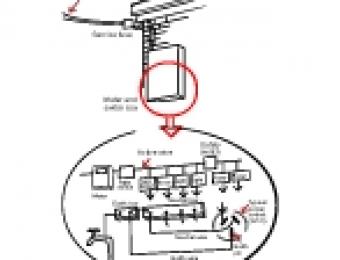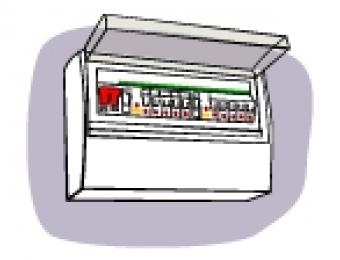What is a safety switch?
Safety switches, or RCDs (residual current devices) may look similar to a circuit breaker but their primary functions are quite different. The anatomy of the safety switch is designed to keep the coroner from having to investigate yours because of a preventable electrocution. House wiring is based on the multiple earthing of the neutral conductor - and this is why a safety switch can save a life. The reason? Look at the diagrams:
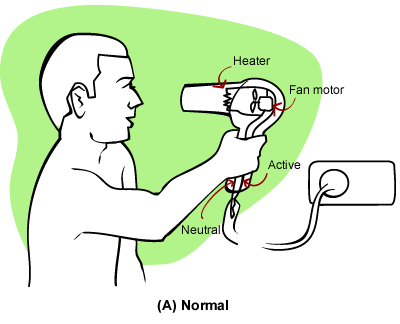
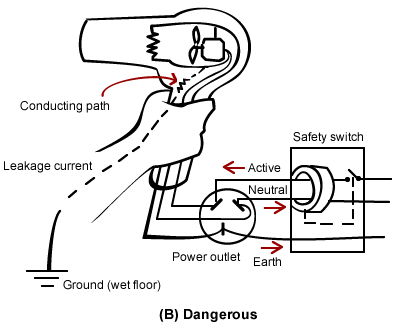
Drawing A shows a normal situation - entirely safe. The arrows show electrical current flowing along the 'active' wire through the hair dryer fan motor and heater, and then back through the neutral wire.
Drawing B shows a dangerous situation. The hair dryer has become wet, and the person using it is clammy and standing on a wet floor. This drawing shows that not all the current returns via the neutral wire - some returns via the earth wire. The safety switch senses the current in the active and neutral lines. When things are safe, the current flowing towards the hair dryer and the current flowing from the hair dryer are equal but moving in opposite directions, so that they cancel each other out in the sensing part of the switch.
When there is some current flowing through the earth wire though, there is less flowing through the neutral wire. Now the safety switch current sensor sees a difference. It immediately activates a switch, turning the circuit off before any damage can be done.
Safety switches are sensitive
Safety switches can operate (trip) with as little difference in currents between active and neutral as 30/1000th of an amp (30 milliamp). This is below the ventricular fibrillation level for adults - the level at which the normal function of your heart is disturbed. Switches that trip on 10/1000th (10 milliamp) prevent tetanus (muscular cramping). The latter type is recommended in areas where young children play or are cared for.
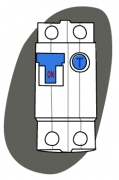
Safety switch requirements
Every domestic installation is required to have at least one safety switch - although you can have more than one. The one you must have is installed in the circuits where you face potential danger: spas, dishwashers, ovens, power points (into which you might plug hair dryers, kettles and so forth).
The value in having more than one safety switch is that it allows you to protect specific circuits without cutting power to areas that always need to stay on (like fridges and freezers, for example).
